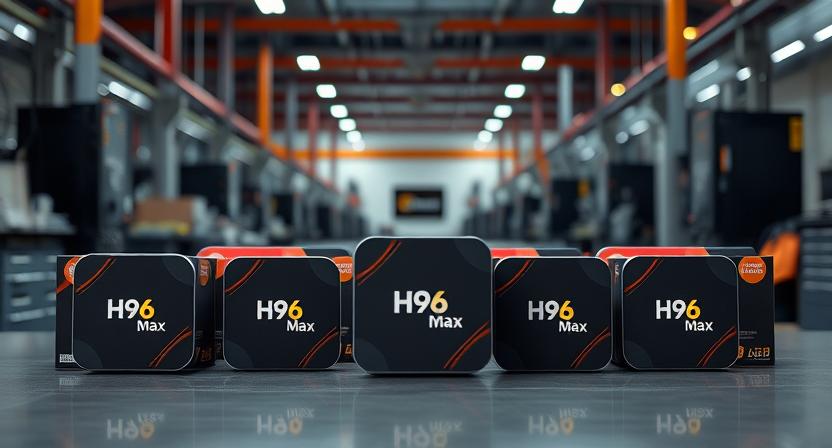Driving the Future of Smart Transit with Android TV Boxes
In an era where connectivity defines progress, the Android TV Box for Transportation Systems has emerged as a powerful enabler of digital transformation. These compact yet versatile devices bring real-time information, entertainment, and automation to public and private transport networks. Whether in airports, buses, metros, or cruise terminals, Android TV Boxes integrate seamlessly with digital infrastructure to enhance passenger experience and operational efficiency. By bridging the gap between technology and transportation, they’re redefining the way people move and interact with their surroundings.
1. The Evolution of Connected Mobility
Smart mobility has evolved from simple navigation aids to fully connected ecosystems. Android TV Boxes form the backbone of this evolution by transforming static displays into intelligent communication portals. These systems deliver live schedules, emergency updates, and interactive advertisements to passengers, powered by cloud-based content management. Operators can update thousands of devices remotely, ensuring synchronized information flow across vast transit networks. As transport systems grow more complex, the flexibility of Android OS ensures adaptability to future technologies like AI-driven route optimization and IoT connectivity.
2. Enhancing Passenger Communication
Passenger communication must be fast, accurate, and engaging. Android TV Boxes enable this by integrating multimedia with transportation data. In metro systems, for instance, they display real-time arrivals, delays, and alternate routes alongside promotional content. Their high-definition output ensures clarity even in busy environments, while multilingual support accommodates international passengers. Through intelligent scheduling, operators can customize messages based on region, language, or time of day—turning communication into a data-driven experience that keeps passengers informed and connected.
3. Immersive Passenger Entertainment
Entertainment is no longer optional—it’s expected. The Android TV Box provides an interactive entertainment platform for passengers during transit. Users can enjoy live news, music, movies, or educational content directly on embedded displays. Long-distance travel systems use these boxes to deliver personalized experiences through AI-based recommendations and localized media libraries. For operators, integrating advertising within entertainment feeds generates additional revenue streams while improving engagement. This convergence of infotainment and data creates a more enjoyable and productive travel experience.
4. AI-Driven Efficiency and Predictive Management
Artificial Intelligence enhances Android TV Box functionality by optimizing operations automatically. AI algorithms predict passenger density, adjust content relevance, and detect anomalies across connected systems. For example, if a device malfunctions, the system sends an instant alert for maintenance. Predictive analytics also monitor performance metrics like uptime, power usage, and data throughput. These insights help operators anticipate issues, schedule proactive maintenance, and maximize system longevity—all without manual intervention.
5. IoT Integration for Smart Transit
Integrating Android TV Boxes with IoT sensors unlocks an entirely new dimension of intelligent transportation. Through connected networks, vehicles and stations communicate in real-time with centralized control systems. Displays powered by Android TV Boxes can reflect environmental conditions, passenger flow, or even energy consumption levels. In buses, GPS integration updates arrival times dynamically; in airports, IoT data assists with gate coordination and queue management. This synergy between IoT and Android platforms ensures operational transparency and real-time optimization.
6. Customization and Brand Consistency
The Android OS offers unparalleled flexibility for OEM/ODM customization. Transport operators can brand user interfaces, preinstall proprietary apps, and integrate third-party platforms to suit their operational goals. From ticketing applications to localized weather updates, Android TV Boxes adapt easily to specific transportation needs. Manufacturers like H96 Max provide customizable firmware, interface designs, and hardware configurations, ensuring consistency across fleets and terminals while reinforcing the operator’s brand identity.
7. Connectivity and Remote Management
High-speed connectivity is the backbone of Android-powered transit systems. Equipped with Wi-Fi 6, Bluetooth 5.0, and optional 5G modules, Android TV Boxes ensure low-latency communication across devices. Cloud-based dashboards enable remote management of software, updates, and diagnostics. Operators can deploy content updates to thousands of displays simultaneously while monitoring device health from anywhere. This remote accessibility drastically reduces maintenance costs and ensures uninterrupted service delivery.
8. Safety, Accessibility, and Inclusivity
Safety remains a top priority in public transportation. Android TV Boxes serve as visual emergency broadcast tools capable of instantly switching from entertainment to critical alerts. In addition, features like audio narration, closed captioning, and adjustable display brightness ensure inclusivity for passengers with varying needs. These systems meet international accessibility standards, making transportation safer and more accommodating for everyone. Operators can also utilize built-in cameras and sensors to assist in crowd management and security monitoring.
9. Sustainability Through Technology
The transition to Android-based transportation systems aligns with sustainability goals. Android TV Boxes operate on low-power ARM chipsets, significantly reducing energy consumption and carbon emissions. Their modular design allows for easy upgrades, minimizing e-waste. Cloud updates eliminate unnecessary hardware replacements, while analytics help optimize energy usage based on passenger load and operational hours. As governments push for greener transport initiatives, Android-powered solutions play a key role in achieving energy-efficient urban mobility.
10. Partnering for a Smarter Future
The integration of Android TV Box for Transportation Systems is shaping the future of global mobility. As transport agencies embrace digital transformation, they require reliable partners to deliver scalable, customized, and durable solutions. H96 Max, with its annual output exceeding five million Android TV Boxes and distribution to over 150 countries, is a trusted OEM/ODM provider for smart transit innovation. The company’s 50+ worldwide warehouses and 2,000+ customization projects ensure rapid deployment and localized support for transportation networks of any scale.
Contact H96 Max today—the leader in Android-powered smart display solutions. Together, we can create intelligent transit systems that connect passengers, empower operators, and build a sustainable future for global travel.
READ MORE
Driving Innovation: How Android TV Boxes Are Transforming Transportation
Next-Gen Transportation: The Impact of Android TV Boxes on Smart Mobility
Smart Connectivity: How Android TV Boxes Revolutionize Transportation
Integrating Android TV Boxes into Modern Transportation Networks
Smart Transformation: Android TV Boxes in Transportation Systems
Quick Links





.png)
.png)






.png)

.png)














